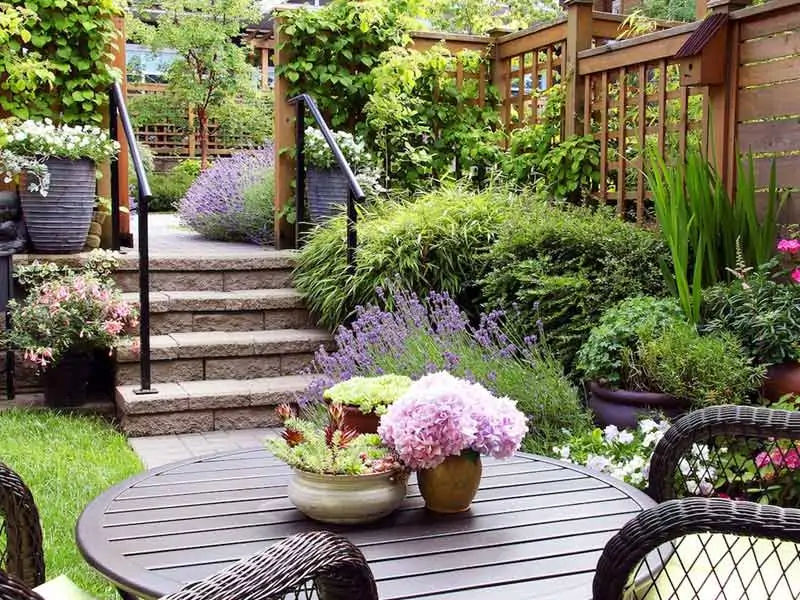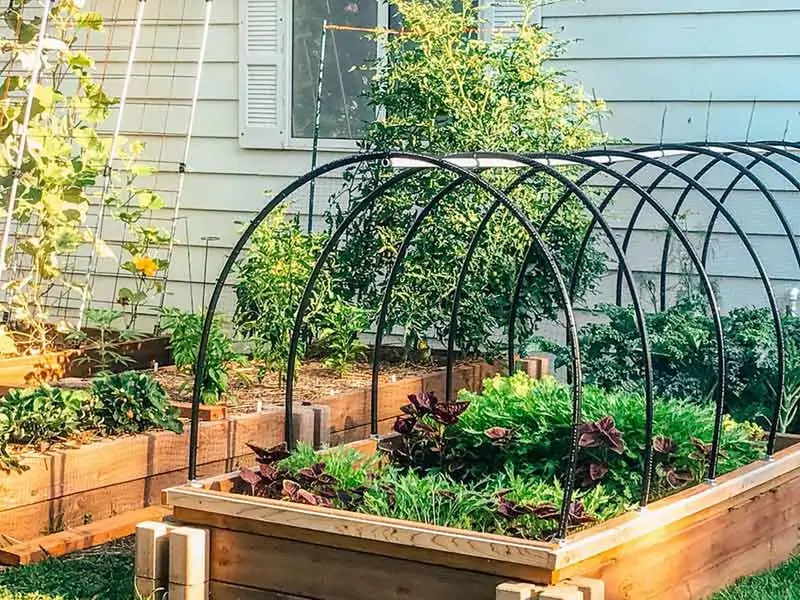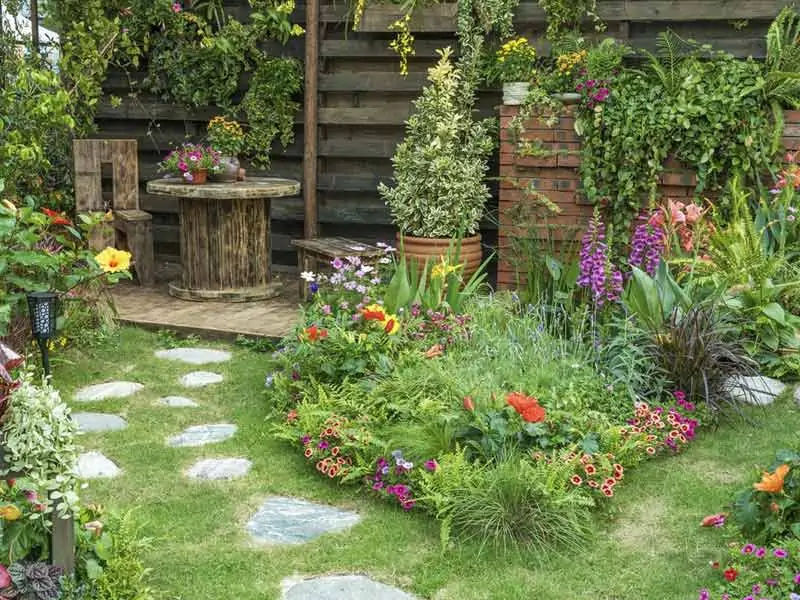Home Garden: Here is what you need to Know
Shortpedia
Content Team
Home gardens have been identified around the world as a significant supplemental source that contributes to food and nutritional stability and livelihoods.
With the world's population estimated to exceed 9 billion by 2050, there is an ongoing need to expand food supply and buffer stocks. In this scenario, countries worldwide, especially developed countries where poverty and food shortages are more prevalent, are employing a variety of counter-strategies to satisfy rising demand and avoid food shortages and famine. In recent years, there has been an increase of concern in strengthening and intensifying local food production to offset the negative impact of global food shocks and food price volatility.
As a result, home gardens are seeing a lot of coverage to improve household food security and nutrition. Home gardens have stood the test of time as an important part of local food systems and the rural landscapes of developing countries worldwide.
About Home Gardens

Home gardens can be used in both rural and urban settings, mostly in small-scale subsistence farming systems. Subsistence processing processes, which originated in small garden plots around the home, can be traced back to the origins of modern agriculture. These gardens have withstood the test of time and continue to play an important role in the family's food and profits.
Home garden experiences from developing nations
Home gardens have long been an essential feature of local food networks in developing countries worldwide. Many studies provide descriptive data and surveys of home gardens in emerging Asian, African, and Latin American countries, highlighting their myriad benefits to communities and families. They are perpetual small-scaled subsistence agricultural systems developed by households to procure and augment the family's food requirements.
Home gardens are mostly intended to grow and harvest food for family use. Still, they can also be diversified to produce various applications, such as indigenous medicine and home remedies for specific ailments, kindling, renewable fuel supply, compost, construction material, and animal feed.

Social advantages
Improving Food and Nutrition Security
The most profound social advantage of home gardens is the direct contribution to household food security by increasing the supply, accessibility, and consumption of food goods. In rural and urban areas, home gardens are cultivated to provide convenient access to fresh plant and animal food supplies. Food from the garden contributes significantly to the family's energy and nutritional needs continuously.
Enhancing wellbeing
Plants are a valuable source of medicine for humans and animals. They are also used as biological pesticides to protect crops from disease and insect infestations. Herbs and medicinal plants are cultivated in home gardens worldwide, and almost 80% of people in developed countries use them to cure different ailments and diseases and improve their health conditions. A large percentage of the plants found in home gardens have medicinal value and can be used to treat various general health conditions cost-effectively.
Increasing the role of women
Women play an essential role in food production in many countries, but their worth is often questioned. They are also involved in home planting, though their participation is influenced by socio-cultural norms [20]. Women contribute significantly to household food production in most cases, but this does not mean that home gardening is primarily a female practice.
Economic advantages
Home gardens have economic benefits beyond food and nutritional protection, and subsistence, especially for low-income households. According to the facts, home gardens contribute to income production, better livelihoods, and household economic wellbeing and foster entrepreneurship and rural growth.
Home gardens are actively encouraged in many countries to avoid hunger and provide a source of income for poor families in developed countries. While home gardens are typically thought of as subsistence-level production systems, they can be designed to be more productive commercial enterprises by growing high-value crops and providing animal husbandry. A variety of research studies have been conducted to assess the future or actual economic contribution to the family, local economy, and social growth.
Environmental advantages

Home gardens offer many environmental and ecological advantages. They are the critical unit responsible for initiating and implementing environmentally sustainable approaches to food production while preserving habitats and natural resources. Home gardens are usually diverse, with a diverse range of plant and animal species. As a result, they make intriguing arguments for ethnobotanical study.
Gardens are dynamic, resembling organic agricultural development processes that promote biodiversity conservation. The rich diversity and composition of plants and the wide distribution of faunal and floral strata are exceptional characteristics of home garden ecology.
How to Begin a Self-Sustaining Home Garden

Growing your own fruits, tomatoes, spices, and beans—either in your own yard or at a community garden—is the best way to continue the consuming fresh, organic foods movement. Maintaining a fruitful, organic home garden, like cooking from scratch at home, offers a feeling of empowerment when you have full control over what you eat. You not only know where your food comes from, but you also have the power of how it is grown.
If you claim to destroy any plant that crosses your way, take heart: starting your own organic home garden doesn't have to be complex, costly, or time-consuming. In reality, for new gardeners, starting small is the secret to success. The following pointers will assist you in transitioning from a timid first-time gardener to a full-fledged home gardener.
Start with one or two potted tomato plants and hearty herbs like rosemary if you have a small outdoor space or are unsure of your skills. When you're able to take on a bigger project, we consider planting small beds in squares rather than rows and using a 12-inch by 12-inch grid layout. We also advise new gardeners to choose a location for their beds that does not puddle during rain, is free of tree roots, and receives at least six to eight hours of sunshine per day. Don't be concerned with the soil or gravel in your yard because you won't be using it in your flower beds.
Which Plants Can I Plant First?
"Peppers and beets are simple to produce and mature quickly. Every time I plant beets, I feel like a very smart gardener. Eggplants are also simple to prepare."

What Is the Price of a Home Garden?
The cost just depends on how large and intricate you want to make your home garden. Still, you can cultivate your own organic fruits, vegetables, and herbs for a comparatively modest up-front investment of $350 to $500 (possibly more if you wish to add an irrigation system) or so. Costs include soil or planting mix and other compost, beds, seeds or trees, farming equipment, a hose or irrigation system, and a hose or irrigation system.
Why Are there Home Gardens?
While a home garden brings aesthetic value to a home, urbanization has put an end to the illusion of getting Home Garden Ideas. Gardening with Exotic Plants benefits the environment by providing fresh air, increasing oxygen levels, and filtering air pollutants. Simple Home Garden Plants will help you modernize your interior design. Bring fresh plants and colorful & lively planters to the un-spirited city. You need to get started with limited access to a free room for your Home Garden Design to be executed.
